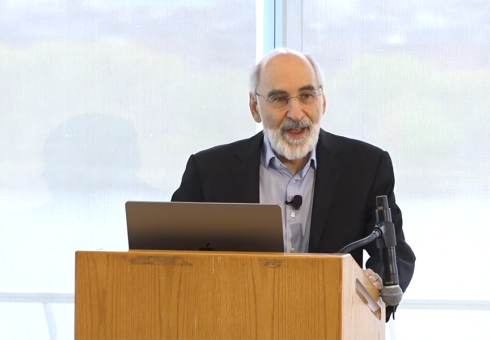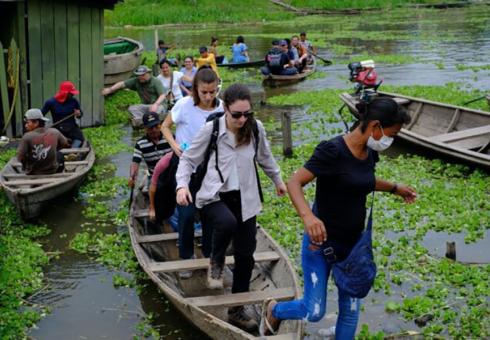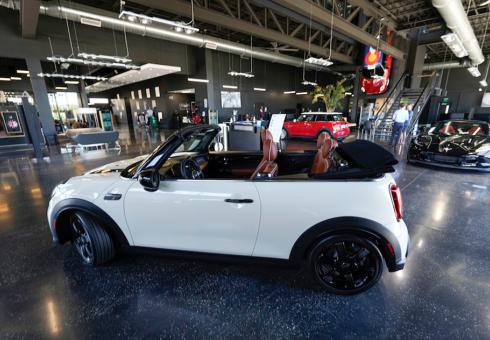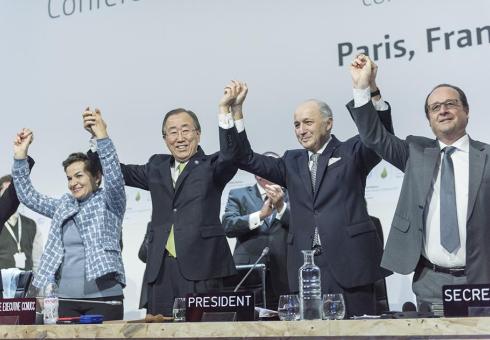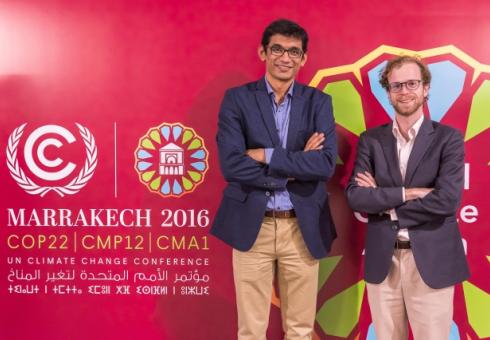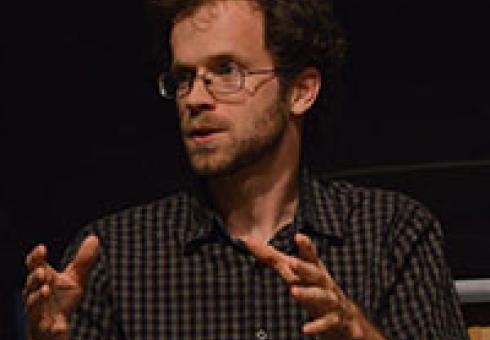At the MIT Sustainability Summit 2025, MIT Sloan Professor/CS3 faculty affiliate John Sterman stresses the need for “multisolving”—actions that cut emissions and help us adapt to the climate damage we have already caused. (MIT Sloan School of Management)
News and Outreach: John Sterman
Components of the Environmental Solutions Initiative will become part of the Climate Project, CS3, Climate Policy Center and other MIT entities (MIT Office of the Vice President for Energy and Climate)
Founding Director Susan Solomon and other MIT CS3-affiliated researchers among key contributors (MIT Environmental Solutions Initiative)
Can carbon trading systems reduce global emissions, or are they little more than greenwashing? Clear, enforceable standards may make the difference. (MIT News)
MIT's Noelle Selin and John Sterman comment on potential air quality and climate benefits (Washington Post)
Joint Program founding Co-Director corrects U.S. president's misinterpretation of Paris Agreement
MIT researchers focus on empathy, transparency, and empowerment at this year's United Nations Climate Change Conference
At UN Climate Change Conference, MIT researchers share insights on implementing climate commitments
Professors Jake Jacoby, Valerie Karplus, Tom Malone, and John Sterman discussed their COP21 experiences on a panel moderated by MITEI Deputy Director Rob Stoner.
MIT attendees of COP21 share experiences, perspectives on outcomes
John Reilly interviewed on PRI's The World
Jason Margolis | PRI’s The World
If you’re in the oil business, you might think your best days are in the rear-view mirror. Oil is selling for rock-bottom prices. Your product is blamed for destroying the planet. And here’s what the leader of the free world thinks of oil.
“We’ve got to accelerate the transition away from old, dirtier energy sources. Rather than subsidize the past, we should invest in the future,” said President Obama during his recent State of the Union address.
To state the obvious though, if you’re an oil company, you produce oil. Energy economist John Reilly at the MIT Sloan School of Management says companies like ExxonMobil and Chevron are facing a classic business challenge.
“Could the horse and buggy manufacturers become automobile producers? Or is some other company going to because they’re more innovative, or not bound by what they’re already doing?" asks Reilly.
But before we pity the poor oil companies, remember, these are the richest companies in the world.
“Most of them have lots of cash. And so, if there’s a successful alternative, if they don’t develop it, they probably can acquire those companies and transition that way,” says Reilly.
. . .
Read the full article and hear the broadcast at Public Radio International’s The World.
Photo: Norwegian company Statoil plans to build the first floating wind farm off the Scottish coast. (Photo courtesy of Statoil)
AP, Seth Borenstein
WASHINGTON (AP) — Heat-trapping greenhouse gases in the atmosphere are building up so high, so fast, that some scientists now think the world can no longer limit global warming to the level world leaders have agreed upon as safe.
New figures from the U.N. weather agency Monday showed that the three biggest greenhouse gases not only reached record levels last year but were increasing at an ever-faster rate, despite efforts by many countries to reduce emissions.
As world leaders meet next week in South Africa to tackle the issue of climate change, several scientists said their projections show it is unlikely the world can hold warming to the target set by leaders just two years ago in Copenhagen.
"The growth rate is increasing every decade," said Jim Butler, director of the U.S. National Oceanic and Atmospheric Administration's Global Monitoring Division. "That's kind of scary."
Scientists can't say exactly what levels of greenhouse gases are safe, but some fear a continued rise in global temperatures will lead to irreversible melting of some of the world's ice sheets and a several-foot rise in sea levels over the centuries — the so-called tipping point.
The findings from the U.N. World Meteorological Organization are consistent with other grim reports issued recently. Earlier this month, figures from the U.S. Department of Energy showed that global carbon dioxide emissions in 2010 jumped by the highest one-year amount ever.
he WMO found that total carbon dioxide levels in 2010 hit 389 parts per million, up from 280 parts per million in 1750, before the start of the Industrial Revolution. Levels increased 1.5 ppm per year in the 1990s and 2.0 per year in the first decade of this century, and are now rising at a rate of 2.3 per year. The top two other greenhouse gases — methane and nitrous oxide — are also soaring.
The U.N. agency cited fossil fuel-burning, loss of forests that absorb CO2 and use of fertilizer as the main culprits.
Since 1990 — a year that international climate negotiators have set as a benchmark for emissions — the total heat-trapping force from all the major greenhouse gases has increased by 29 percent, according to NOAA.
The accelerating rise is happening despite the 1997 Kyoto agreement to cut emissions. Europe, Russia and Japan have about reached their targets under the treaty. But China, the U.S. and India are all increasing emissions. The treaty didn't require emission cuts from China and India because they are developing nations. The U.S. pulled out of the treaty in 2001, the Senate having never ratified it.
While scientists can't agree on what level of warming of the climate is considered dangerous, environmental activists have seized upon 350 parts per million as a target for carbon dioxide levels. The world pushed past that mark more than 20 years ago.
Governments have focused more on projected temperature increases rather than carbon levels. Since the mid-1990s, European governments have set a goal of limiting warming to slightly more than 2 degrees Fahrenheit (1.2 degrees Celsius) above current levels by the end of this century. The goal was part of a nonbinding agreement reached in Copenhagen in 2009 that was signed by the U.S. and other countries.
Temperatures have already risen about 1.4 degrees Fahrenheit (0.8 degrees Celsius) since pre-industrial times.
Massachusetts Institute of Technology professors Ron Prinn, Henry Jacoby and John Sterman said MIT's calculations show the world is unlikely to meet that two-degree goal now.
"There's very, very little chance," Prinn said. "One has to be pessimistic about making that absolute threshold." He added: "Maybe we've waited too long to do anything serious if two degrees is the danger level."
Click here to read the rest of the AP story.

